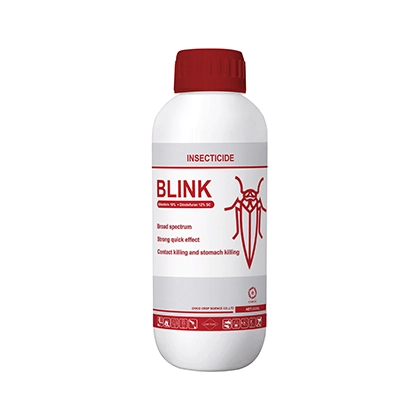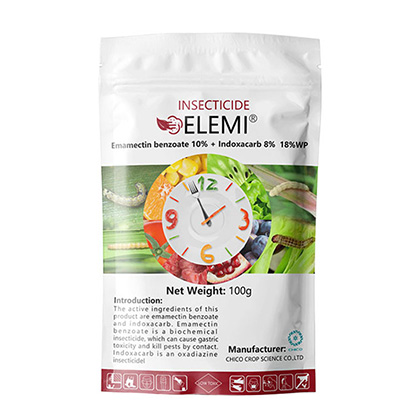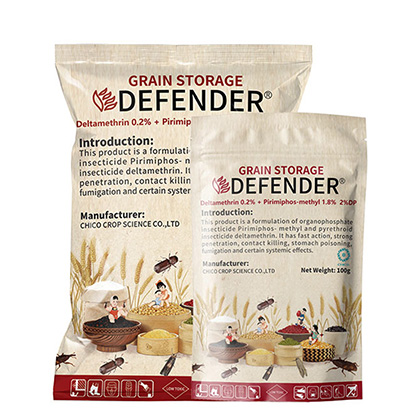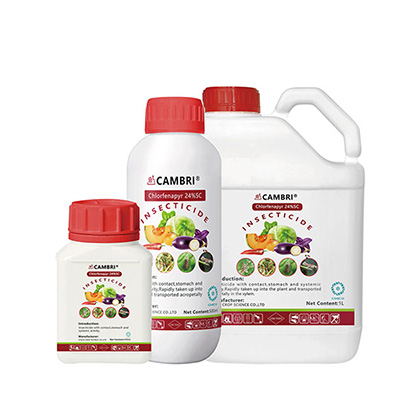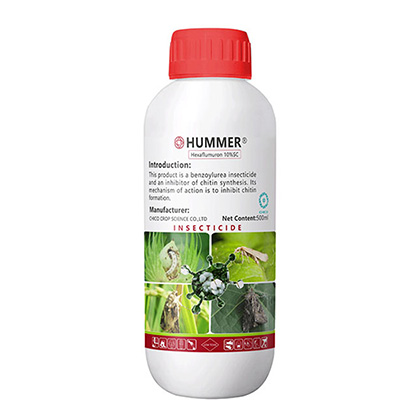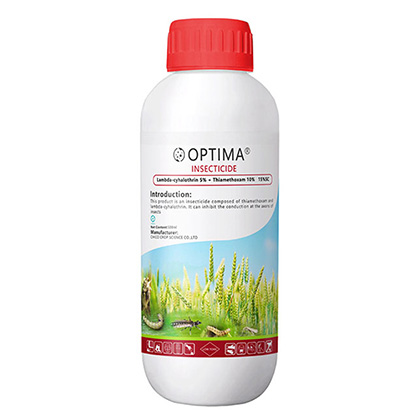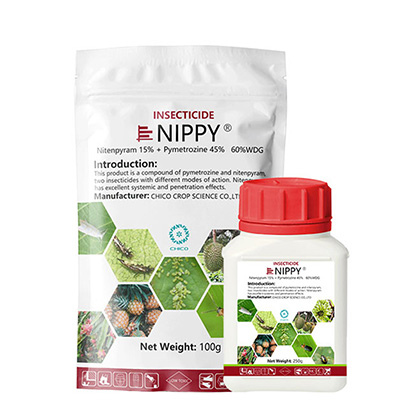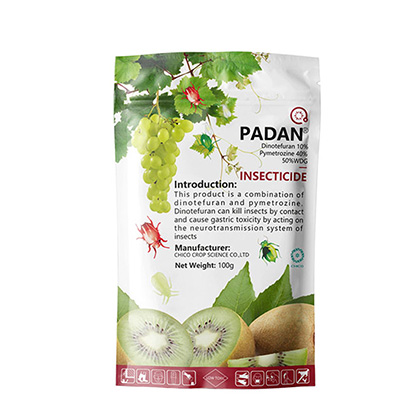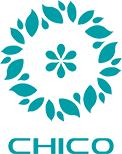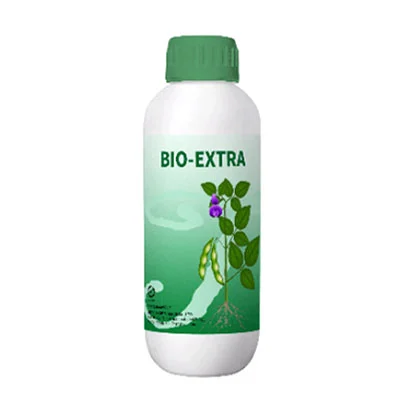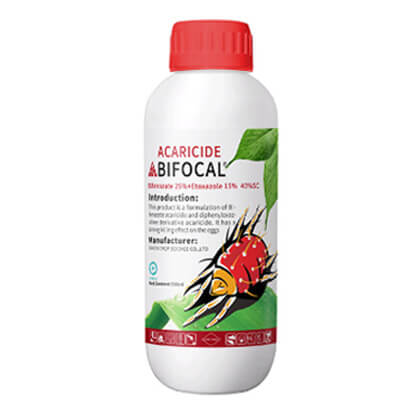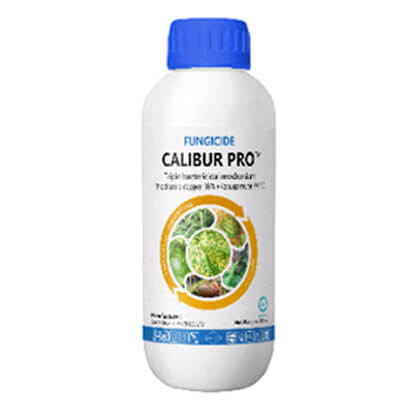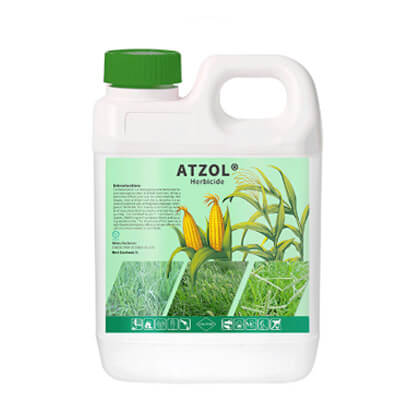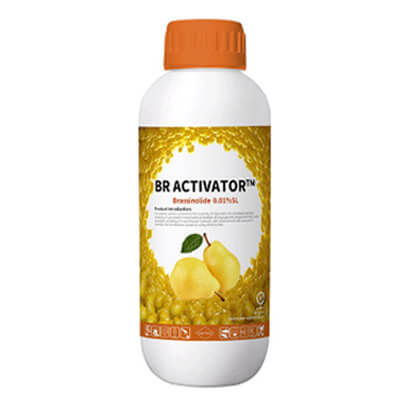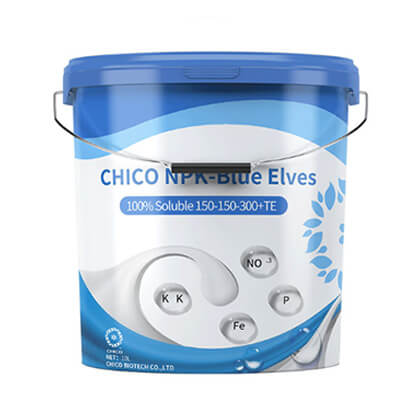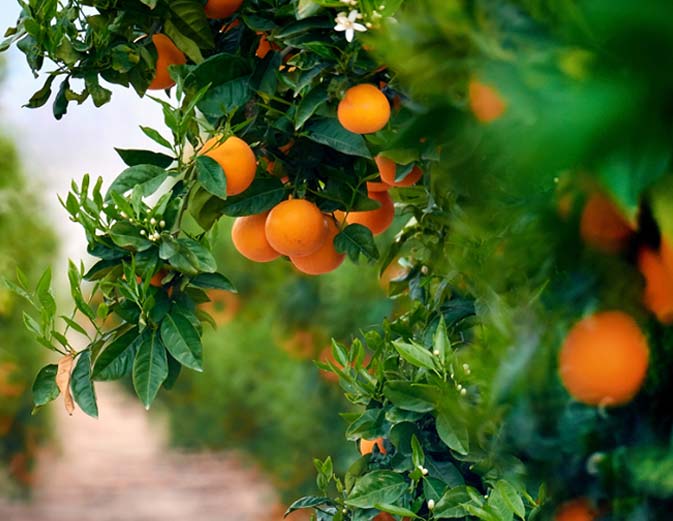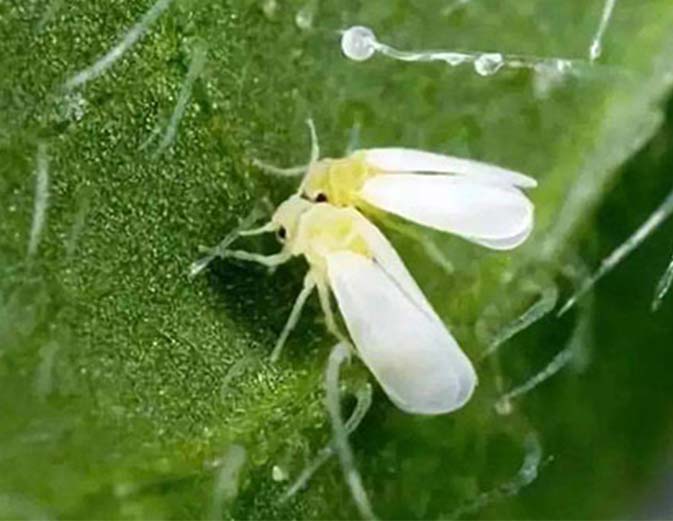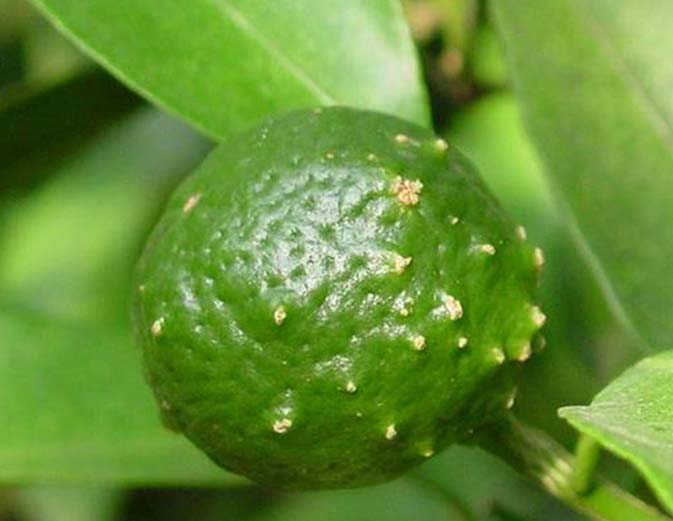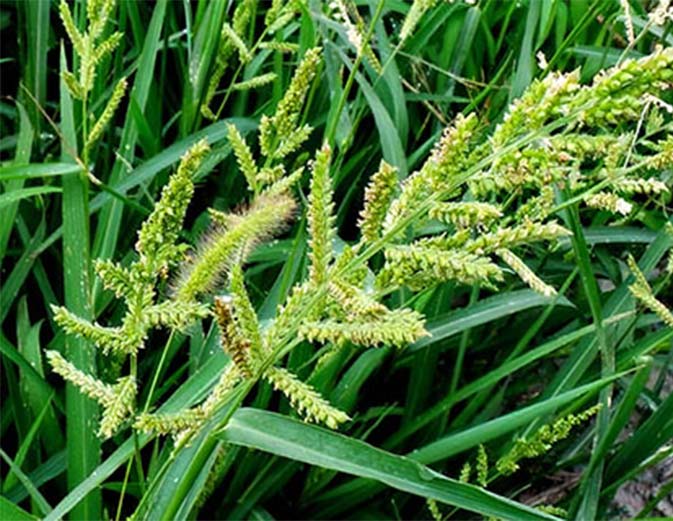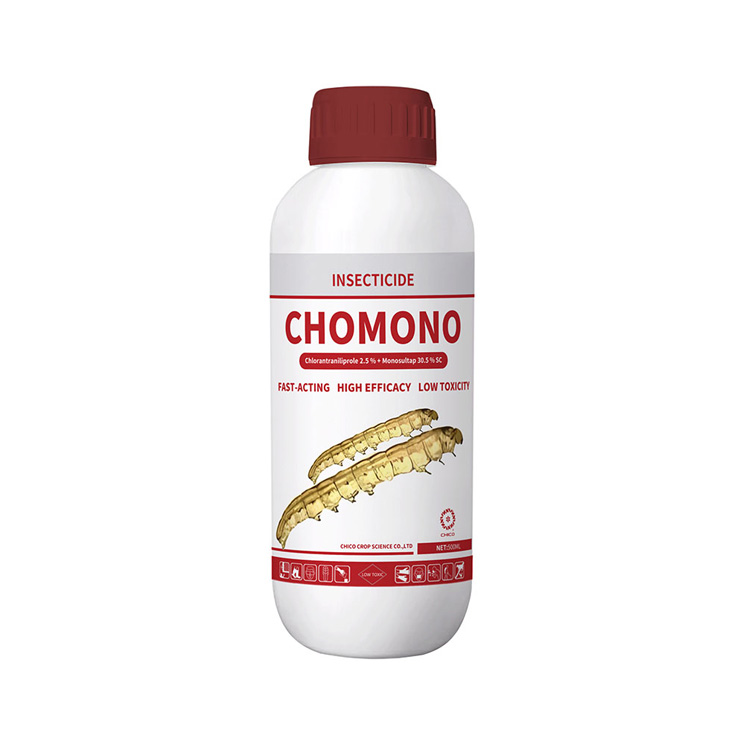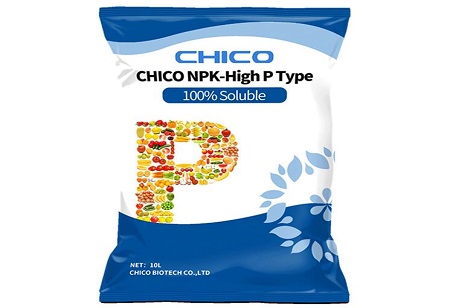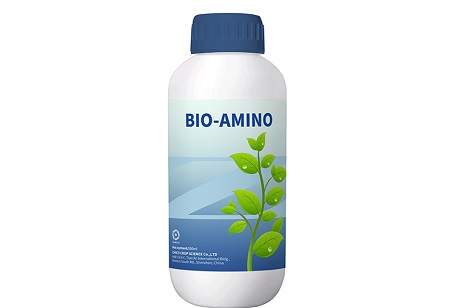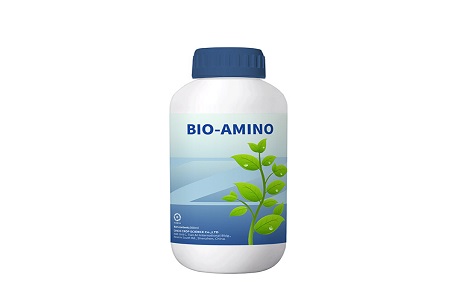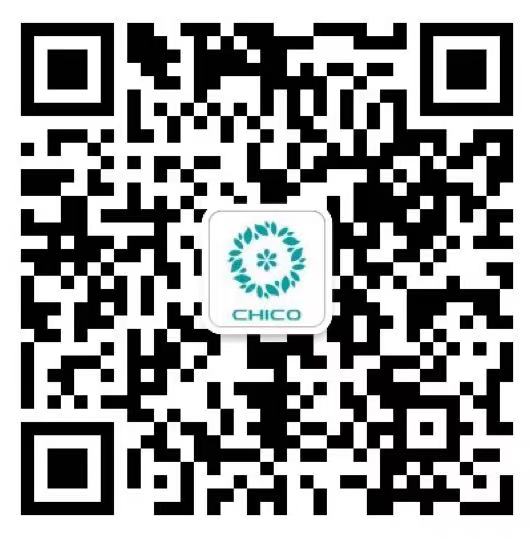
CHOMONO® Chlorantraniliprole 2.5 % + Monosultap 30.5 % SC Insecticide
Product Introduction
Chlorantraniliprole 2.5 % + Monosultap 30.5 % SC
Product Feature
This product is a compound insecticide of Chlorantraniliprole and Monosultap.
Chlorantraniliprole mainly binds to the ichthonidine receptor of the pest muscle cells, resulting in abnormal opening of the receptor channel, and the unrestricted release of pest calcium ions from the calcium reservoir into the cytoplasm, resulting in paralysis and death of the pest.
Monosultap is a synthetic analogues of silkworm toxin, which is quickly transformed into silkworm toxin or dihydrosilkworm toxin when it enters the insect body.
Product Feature
This product is a compound insecticide of Chlorantraniliprole and Monosultap.
Chlorantraniliprole mainly binds to the ichthonidine receptor of the pest muscle cells, resulting in abnormal opening of the receptor channel, and the unrestricted release of pest calcium ions from the calcium reservoir into the cytoplasm, resulting in paralysis and death of the pest.
Monosultap is a synthetic analogues of silkworm toxin, which is quickly transformed into silkworm toxin or dihydrosilkworm toxin when it enters the insect body.
Advantage
1. This product has a strong contact killing, stomach poison, and systemic effect.
2. Broad spectrum, high efficiency.
Applicable Crops
Rice , corn and other vegetable and fruit trees.
.webp)
.webp)
.webp)
Targets
Rice stem borer, leaf roller, etc

.webp)
.webp)
.webp)
.webp)
Uses and Recommendations
Crops | Targets | Dosage(formulation) | Method |
Rice | rice stem borer | 600 - 900 ml / Ha | Foliar spraying |
It is recommended to apply during the period from the peak of egg hatching to the young larval stage. And the recommended water volume in China is 450-750 kg per ha. When applying, please ensure thorough evenly coverage of both the stems and leaves, especially undersides of the leaves. The PHI in rice is 21 days.
Cautions
It is recommended to rotate insecticides with different modes of action.
Do not use this product on windy days or when rain is expected within 1 hour.
Not allowed near bird sanctuaries.
The flowering period of plants in the applied plots and their surroundings should be prohibited, and the effects on the nearby bee colonies should be paid close attention when used. The release area of natural enemies such as trichogramma is prohibited.
Not allowed near sericulture and mulberry garden.
